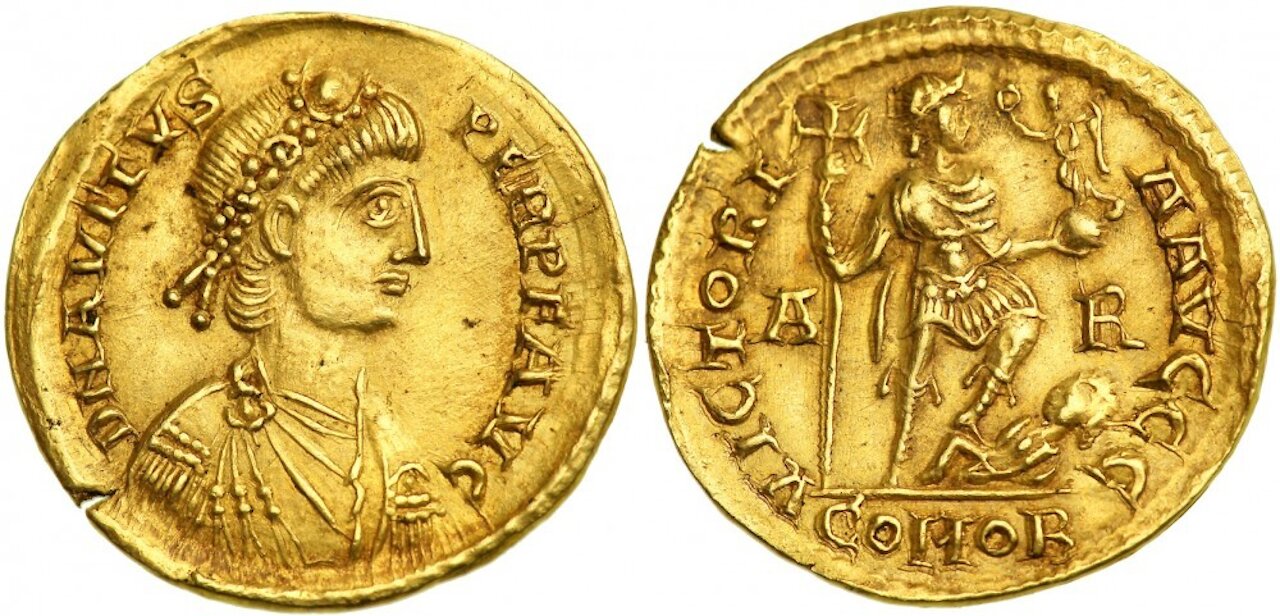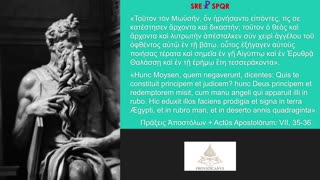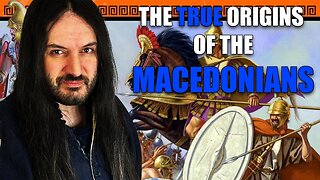Premium Only Content

NVMMVS: D N AVITVS PERP F AVG. • VICTORI-A AVGGG. + A-R COMOB (~456 A.D.)
NVMMVS: D N AVITVS PERP F AVG. • VICTORI-A AVGGG. + A-R COMOB (~456 A.D.)
http://zazzle.com/ProVaticanus
Avitus, AD 455-456. Gold Solidus (4.47g). Minted at Arles July 9, AD 455 - October 17, AD 456. West Roman Empire. D N AVITVS PERP F AVG. Rosette-diademed, draped, and cuirassed bust of Avitus right. Reverse: VICTORI-A AVGGG. Emperor in military attire standing right, holding long cross in right hand and Victoria (Victory) on globe in left, resting left foot on recumbent captive; A-R in field; COMOB in exergue. RIC 2401; Lacam pl. 9, 16 (this coin) ; Depeyrot 24/1. Some faint signs of burnishing in the right obverse field. Portrait of unusually fine style and well struck. Exceedingly rare. Nearly Extremely Fine. .
The brief, troubled reign of Marcus Maecilius Flavius Eparchius Avitus came against a backdrop of chaos, disintegration and intrigue in the dying West Roman Empire. Avitus was a Romano-Gallic nobleman of high standing who served as an envoy between the Roman Senate and the Visigoths who now ruled large swaths of Gaul and Spain. Upon the death of the usurper Petronius Maximus at Rome in AD 455, Avitus easily gained the support of the Visigothic king, Theodoric II, and was proclaimed emperor of the West at Arles in southern Gaul on July 9 or 10. An assembly of Gallo-Roman nobles ratified the elevation at Toulouse the following month, and the East Roman Emperor Marcian gave his approval in September. The aristocrats and common folk of Italy, however, viewed Avitus as a Gallic interloper and gave him a cool reception upon his arrival at Ravenna. Badly in need of military prestige, Avitus looked about for a capable general to lead his armies and found one in the Romanized barbarian Ricimer, who had won a naval battle against the Vandals off the coast of Corsica early in AD 456. But Ricimer had grand designs of his own. Appointed Master of Soldiers, he soon began intriguing with Majorian, the dashing Roman officer leading the army of Italy, to undermine Avitus' feeble regime. A severe famine in Italy only worsened the position of Avitus, whose Visigothic allies were now preoccupied with a war against the Suevi in Spain. Under pressure from the Italian bluebloods, Avitus dismissed his Gothic bodyguards and Gallic advisors, which only left him more vulnerable. The final coup d'etat came on October 17, AD 456, when Majorian and Ricimer withdrew their support and simply declared Avitus deposed. He fled Rome, hoping to make safe haven in Gaul, but was overtaken by Ricimer, forced to abdicate, and consecrated bishop of Piacenza (a common means of permanently removing someone from government service). He never lived to take up his clerical post, dying a few days or weeks later, either of natural causes or on Ricimer's orders.
The exceedingly rare coinage of Avitus reflects his Gallic origins, as most of the coins in his name appear to have been struck at the newly reopened mint of Arelate (modern Arles), where he was first acclaimed emperor. Most of his coins are hastily and crudely engraved, but this piece is of remarkable style and has a portrait that may truly reflect his brooding, downcast countenance .
Cf. Provenance: Ex Numismatica Ars Classica 62, lot 2126; Cuvreau-Parsy Auction, April 15, 2008, lot 166; Hess-Leu 22, 1963 lot 292.
Gratias ago tibi Deo per instrumenta de Jove Mauro Cámara pro bono rei publicae.
#Avitus #SPQR #RomanEmpire
-
 2:08
2:08
ProVaticanus
18 days agoΤοῦτον τὸν Μωϋσῆν...ὁ θεὸς καὶ ἄρχοντα καὶ λυτρωτὴν ἀπέσταλκεν #Act735 #Biblia #Μωϋσῆ
8 -
 3:54:35
3:54:35
Mally_Mouse
9 hours ago🎮 Let's Play!!: Stardew Valley pt. 34
45.2K2 -
 18:25
18:25
MetatronHistory
2 days agoThe REAL Origins of the Macedonians
39.8K4 -
 1:22:12
1:22:12
MattMorseTV
6 hours ago $163.12 earned🔴It’s MUCH WORSE than WE THOUGHT. 🔴
137K204 -
 7:22:09
7:22:09
Meisters of Madness
9 hours agoOmega Gaiden - Part 4
34.7K1 -
 2:51:18
2:51:18
Barry Cunningham
9 hours agoBREAKING NEWS: NATIONAL GUARD ATTACK PRESS CONFERENCE AND LIVE UPDATES!
82.5K52 -
 LIVE
LIVE
SilverFox
5 hours ago🔴LIVE - ARC AT NIGHT! COME THRU!
473 watching -
 2:46:09
2:46:09
Joker Effect
5 hours agoCLAVICULAR - What the hell is "Looks Maxing"? Asmond Gold is a Demon. KaceyTron. Steve Will do it.
38.8K3 -
 3:31:22
3:31:22
SlingerGames
5 hours agoLIVE - Wumble Wednesday - BIRTHDAY STREAM!
16.5K3 -
 LIVE
LIVE
StevieTLIVE
5 hours agoWarzone Win Streaking BIG Challenges MASSIVE Hype NO Losses LOCK IN
78 watching